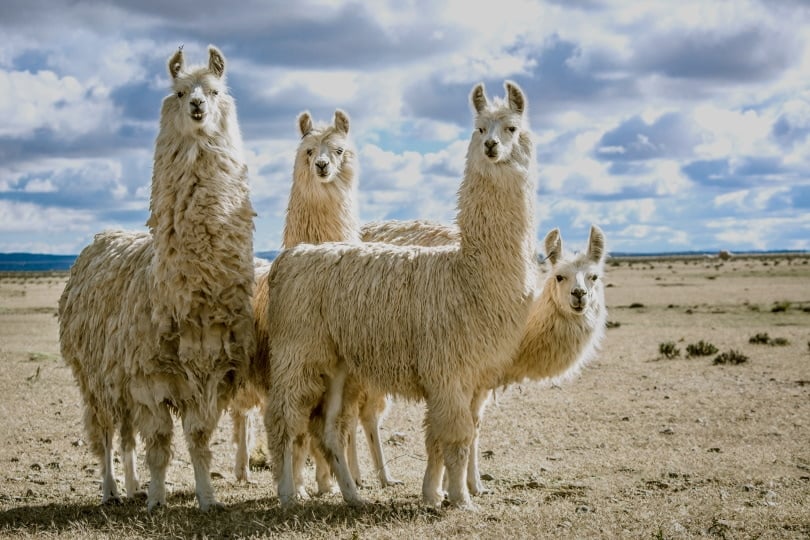Note: This article’s statistics come from third-party sources and do not represent the opinions of this website.
Llamas are becoming more and more popular in the farming world. They’re used as guardians for livestock, wool production, and even meat. While they’re not as common as cattle, chickens, or sheep, their population in the U.S.A. and around the world is increasing. There are over 165,000 llamas in the U.S.A. alone.
Click to Skip Ahead:

Top 16 Worldwide Llama Statistics
- There are 165,190 llamas in the U.S.A. as of February 2022.
- As of February 2022, 30,966 people own llamas in the U.S.A.
- The Southwest Llama Rescue (SWLR) received $107.60 from smile.amazon.com donations in the last quarter of 2021.
- There are 32,180 llama owners around the world as of February 2022.
- 7 million llamas and alpacas are estimated to live in South America.
- There are more than 5,000 llamas in the U.K.
- 12,458 llamas were registered with the German Alpaca breeders Association in 2020.
- 3–3.5kg of fleece is sheared from one llama, once every 2 years.
- Before the Great Recession, a llama could sell for up to $220,000.
- A farmer in Indiana sold a llama for $20,000 in 2019.
- New Zealand boosts its fiber industry with llama and alpaca wool.
- In 78% of cases, llamas used as livestock guardians stop predator attacks altogether.
- 3% of llama owners keep llamas as hobby animals.
- In a 2021 study, 741 llamas were found on 75 farms.
- The average guard llama in the U.S.A. costs $532.
- Guard llamas can be effective for 10–15 years.


Llamas in the U.S.A.
1. There are 165,190 llamas in the U.S.A. as of February 2022.
(International Lama Registry)
Among all the U.S.A.-based llama owners, many own more than one. Counting all the llama livestock guardians, pack animals, and those kept for their wool, there’s a massive number of llamas currently living in the States. The numbers might not be as high as they were in the early 2000s, but llamas are growing in popularity again.
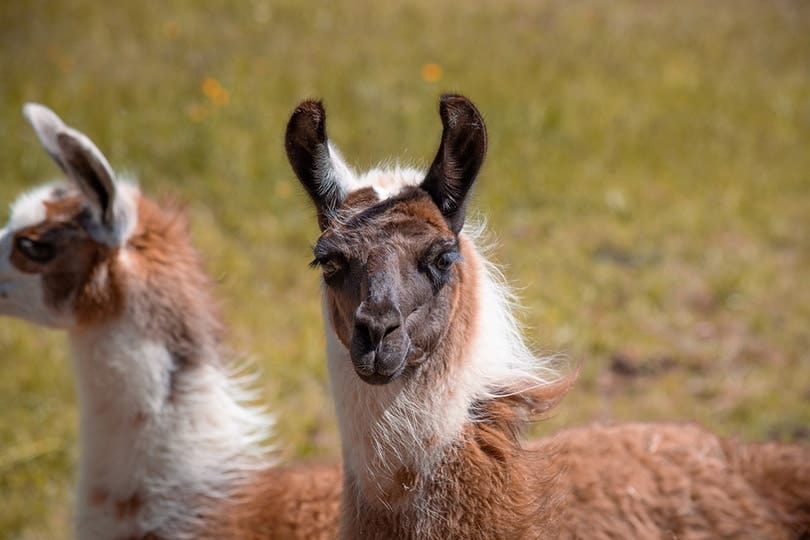
2. As of February 2022, 30,966 people own llamas in the U.S.A.
(International Lama Registry)
Farmers in the U.S.A. keep llamas for many reasons, whether they’re on small hobby farms or working ranches. With the sheer size of the U.S., it’s no surprise the numbers add up. The country is home to the majority of llama owners.
3. The Southwest Llama Rescue (SWLR) received $107.60 from amazon.com donations in the last quarter of 2021.
(Southwest Llama Rescue)
Based in New Mexico, the SWLR rescues and rehabilitates llamas in the western states. As a non-profit organization, it receives most of its funding from donations. Smile.amazon.com enables you to support your favorite charities while you shop on the site.
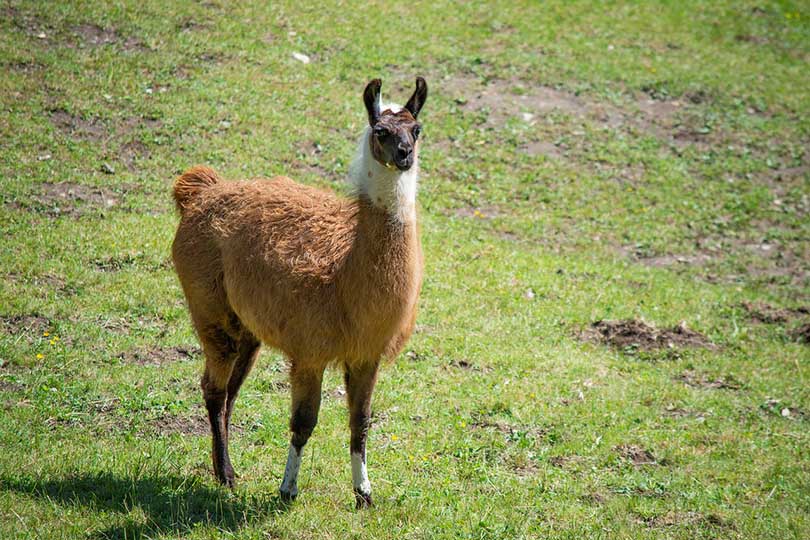

Worldwide Llama Population
4. There are 32,180 llama owners around the world as of February 2022.
(International Lama Registry)
While the vast majority of llama owners are based in the U.S.A., there are plenty of llama fans around the world. 1,214 people outside the U.S.A. own llamas.
5. 7 million llamas and alpacas are estimated to live in South America.
(The British Llama Society)
As llamas are natives of Peru and Bolivia, it’s no surprise that the majority of the worldwide llama population can be found in South America. South American countries host 7 million llamas and their alpaca cousins.
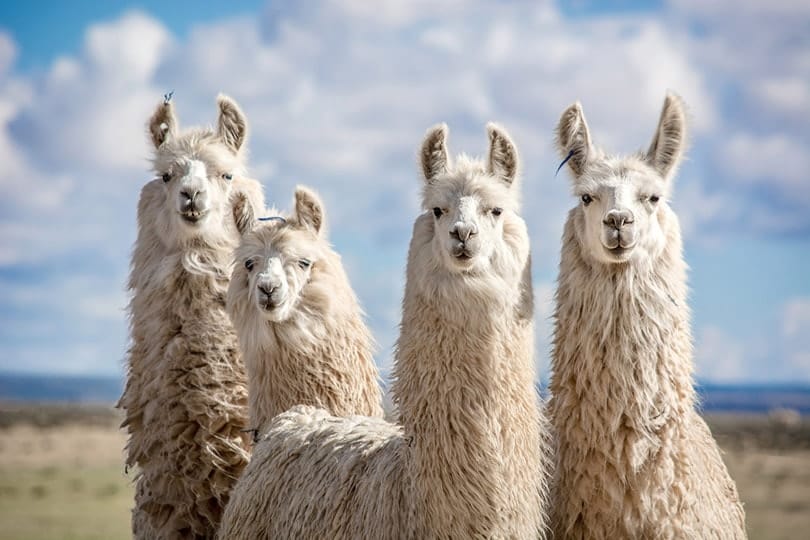
6. There are more than 5,000 llamas in the U.K.
(The British Llama Society)
Although it’s a much smaller country than the U.S.A., the U.K. is no stranger to llamas. While not all animals are registered, it’s estimated that more than 5,000 llamas reside in the U.K.
7. 12,458 llamas were registered with the German Alpaca Breeders Association in 2020.
(NCBI)
Another country with a rising number of llamas is Germany. Of the 15,000 llamas and alpacas estimated to live in Germany, 12,458 were registered with the German Alpaca Breeders Association in August 2020. While there are more certain numbers for sheep, cattle, and pigs, the llama population in Germany is less well known.
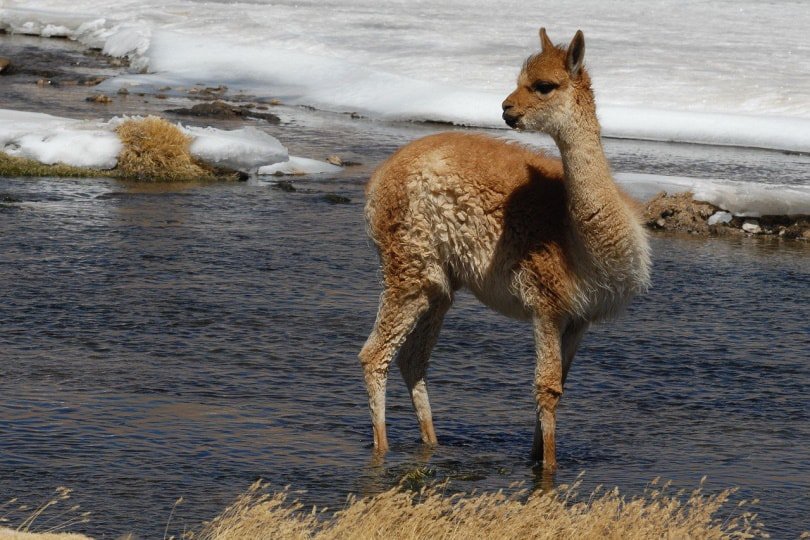

Llama Farming
8. 3–3.5kg of fleece is sheared from one llama, once every 2 years.
(Britannica)
Unlike sheep, which are sheared regularly, llamas only need to be sheared once every 2 years. One llama yields between 3−3.5kg of fleece, and the cleaning process reduces the weight by 66–84%. Unlike alpaca fleece, llama wool is coarser and considered inferior.
9. Before the Great Recession, a llama could sell for up to $220,000.
(AZ Animals)
In the 1980s and 1990s, llamas were popular among farmers. The Great Recession, however, meant that many farmers could no longer afford to buy them. The population of llamas in the U.S.A. started declining during the 2000s. In recent years, though, llamas have started to regain their popularity.
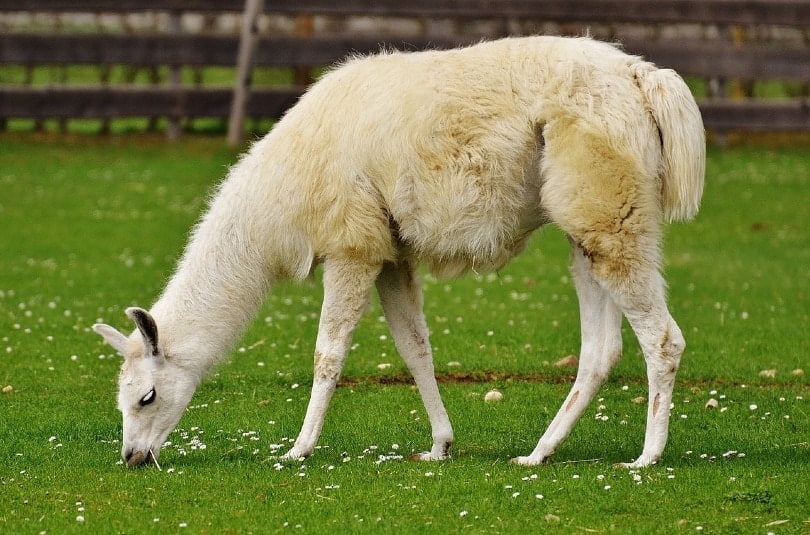
10. A farmer in Indiana sold a llama for $20,000 in 2019.
(NBC News)
While they’re still nowhere near their previous level of fame, llamas have slowly been returning to the limelight. In 2019, a llama was sold for $20,000 by a farmer in Indiana. It might be a slow process, but llamas are steadily becoming a favorite among landowners.
11. New Zealand boosts its fiber industry with llama and alpaca wool.
(The British Llama Society)
Llama fleece might not be as in demand as the fleece from alpacas, but they’re still a favorite when it comes to the fiber industry. New Zealand is one of the many countries that use the fleece of llamas and alpacas along with sheep wool.

12. In 78% of cases, llamas used as livestock guardians stop predator attacks altogether.
(Iowa State University)
Although dogs are the most popular livestock guardians on farms, llamas and donkeys are rising in popularity. A study found that 78% of the llamas used as livestock guardians completely stopped the number of predator attacks.
13. 3% of llama owners keep llamas as hobby animals.
(NCBI)
While some farmers in the U.S.A. keep llamas to protect their livestock, the vast majority keep them for fun. Along with their use as pack animals, llamas are used for their wool production or breeding purposes. The few who keep them as guardians were mostly small farm owners.

14. In a 2021 study, 741 llamas were found on 75 farms.
(NCBI)
Alpacas might be the more popular species when it comes to fleece production, but llamas are still common on farms. During a recent study, 75 farms were found to own 741 llamas between them.
15. The average guard llama in the U.S.A. costs $532.
(Iowa State University)
When it comes to protecting your livestock against predators, any price is worth paying for effective deterrents. Not including the ongoing feeding and grooming costs, the initial outlay for a llama to guard your livestock can be several hundred dollars. On average, farmers can spend $532 on a 5-year-old, castrated llama.
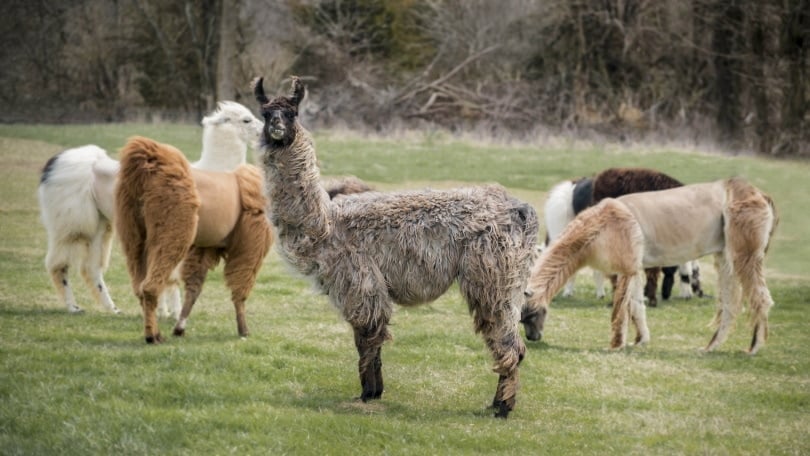
16. Guard llamas can be effective for 10–15 years.
(CDFA)
One of the benefits of llamas over dogs as guardians for your livestock is their longer lifespan. Llamas can help guard your sheep, cattle, and chickens for 10–15 years.

Frequently Asked Questions About Llamas
What are llamas used for?
Although they were originally only used as pack animals, llamas can be used for a range of purposes. You can find them on all sorts of farms, and like most farm animals, llamas have several purposes.
Fleece
Although they’re only sheared once every 2 years, and their fleece isn’t as in demand as that of their alpaca cousins, llamas are often kept for their fleece. It’s coarse and wiry but can still make a warm shawl for those cold winter nights.
Guardians
Dogs make great guard animals but not everyone likes dogs. Llamas are docile around people, but they can be incredibly protective when it comes to defending their own.
Guard llamas usually work alone to ensure that they bond with the livestock that you want to protect. They’ll be friendly toward familiar animals and people while chasing off strange dogs and other predators.
Meat
While llamas aren’t kept primarily for their meat production, there are a few countries around the world that do keep llamas for their meat.
South American countries are where you’ll find most llama meat recipes. This stems back to the Incas, who relied on llamas and alpacas instead of cattle. The meat itself is low in fat with a high protein content.
Pack animals
Sure-footed, happy to match your pace, and sociable, llamas make great companions when it comes to long hikes. They can carry up to 70 pounds, sometimes more, for 20 miles a day.
Llamas aren’t shy to let you know when they’re being pushed too far either. If you try to get them to carry more than they can manage for too long, they’ll refuse to move at all. (National Geographic)
Therapy
Many animals can be used for therapy purposes. Llamas, with their quiet, calm, and sociable dispositions, are among the variety available.

What’s the difference between llamas and alpacas?
Llamas and alpacas are two commonly confused animals. At first glance, they can look identical, but there are a few key traits that you can keep an eye out for.
Appearance
One of the more obvious differences between alpacas and llamas is their appearance. Their facial features, ears, and hair can help you tell these two animals apart.
Llamas have long ears and long faces, and their hair is much coarser than their alpaca cousins. While they’re also used for fleece production, alpaca fleece is generally considered the superior option.
Disposition
Both llamas and alpacas are generally gentle, although they have their bad tempers when it comes to mistreatment. Llamas tend to be more outgoing and protective, which makes them better for guarding livestock over the more timid alpaca.
Size
There are four lamoid species: llama, alpaca, vicuña, and guanaco. Of the four species, llamas are the biggest and average about 47 inches in height at the shoulder and 250 pounds in weight. Alpacas are a little smaller and stand at 35 inches at the shoulder, with a weight ranging between 121 and 143 pounds.
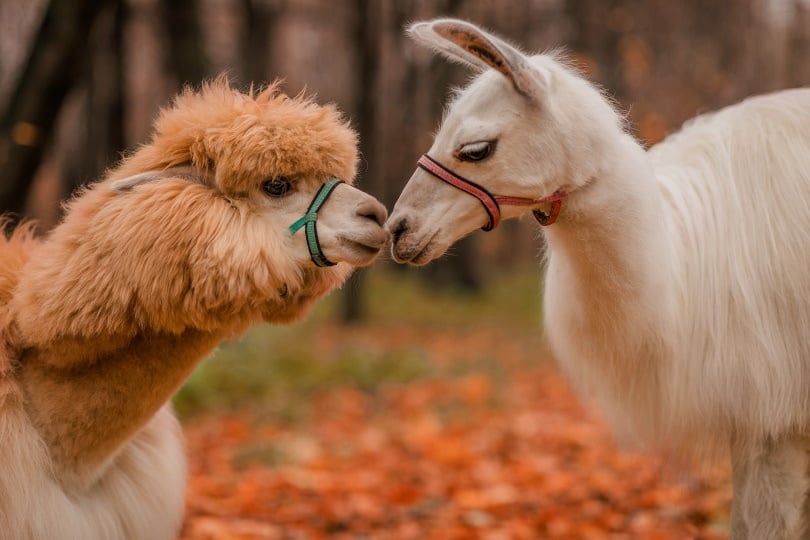
Where did llamas originate?
Bred from the guanaco, llamas originated in South America. They’re found mostly around the Andes, in particular, Bolivia, Chile, Ecuador, and Peru.
Part of their history does include North America, however. Their guanaco and vicuña ancestors were originally descended from camelids native to North America. They migrated to the southern continent about 6,000 years ago, where the Incas began to domesticate them. (Boise State University)
Where can I buy a llama?
Despite the rising popularity of llamas, there’s still a great deal of uncertainty about where you can buy them. Llama associations are great places to start looking, and there are several rescues dedicated to llamas and alpacas throughout the U.S.A. They’re a great way to help support llamas without a home.
- The International Llama Registry
- The International Llama Foundation

Conclusion
Used for their fleece, therapy, guarding livestock, and their meat, llamas are gaining in popularity. With the vast majority of owners residing in the U.S.A., their population is steadily returning to the levels that they were at before the Great Recession.
We hope that these statistics taught you something new about llamas and showed you how awesome these animals can be.
- Related Read: What Does a Llama Sound Like? Facts & FAQ
Featured Image Credit: Noe Besso, Shutterstock
